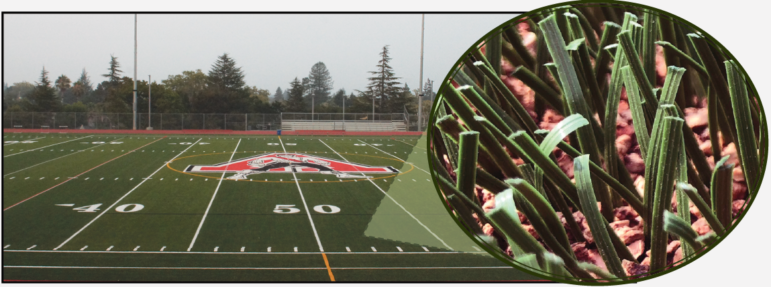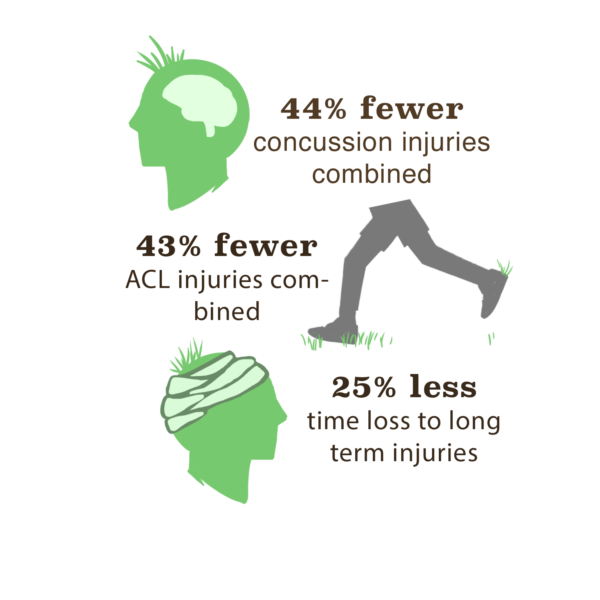
In addition to a turf replacement, lines have been redrawn and added to the field.

Aragon’s rubber turf has been replaced by artificial turf (Revolution 360) with sand and cork pellets as infill, a process which started June 4. Unanimously approved in the 2017-2018 school year, the San Mateo Union High School District’s Board of Trustees spent $850,000 on the project, funded by Capital Project Funding.
A series of yearly GMAX tests, which measure the safety of a playing field, along with other factors, indicated the turf’s expiration.
“Loose fibers from the turf, infill material levels, condition of edge details, subgrade conditions and GMAX results all contributed to recommendations to replace existing field,” Ahuna said. “Artificial turf fields normally come with an 8-year warranty and last about that long before needing replacement. Our previous field lasted 10 years.”
Along with the cork infill, the school set up new additions to the format of the field, regarding requirements for certain sports.
“In the last 10 years, since we put the dirt down, we added lacrosse [lines], and there have been rule changes, in terms of what lines you have to have,” said Aragon Athletic Director Steve Sell. “For football, there’s the lines for the coaches’ box [and] lines for the media. We had to make sure those were taken care of.”
During the replacement, contractors encountered a pipe leak that delayed the transition three to four weeks, according to Sell. Due to this setback, sports teams experienced a change in their practice routine.
Football teams for example, had to practice on the baseball field.
“The baseball field is in really good shape because soccer didn’t have to use it this last year because we have lights,” Sell said. “You’re going to have two football teams on there for two practices a day for a period of time, and I’m afraid of what damage might be done to that baseball field.”
The transition to cork pellets offers environmental, economical and health benefits for athletes and faculty alike.
According to Ahuna, the cork pellets do not require water, fertilizer, herbicide, and pesticides.
This is in addition to the benefits of using rubber over grass. A five year study from West Texas A&M showed that synthetic fields led to “44% fewer concussion injuries combined, 43% fewer ACL injuries combined and 25% less time loss to long term injuries (22+ days).”

Regarding concerns about the possible connection between the rubber turf and cancer, the district said ensuring that player’s safety is of the utmost importance, factoring into the decision for cork pellet infill.
“There’s been a lot of studies saying that the rubberized product was … carcinogenic … Nobody has come up with a conclusive report,” said Deputy Superintendent of Business Elizabeth McManus. “Having said that, when we knew we had to replace the turf field, the product that we replaced it with is cork. If there’s any ever validation to it, it’d be better to have safest product on the market on the field than something that is still being studied.”
The rubber turf created health problems, such as turf burns and related infections.
“The main issue that our [rubber] turf causes in soccer is turf burn … These cuts can easily become infected … as the turf is extremely dirty,” said senior Grace Simenc. “For both sports, the turf heats up very quickly and can hurt your feet or make it more difficult to play because it’s too hot.”
The shift from rubber turf to cork pellets provides an improvement for the environment and for the health of student-athletes.



